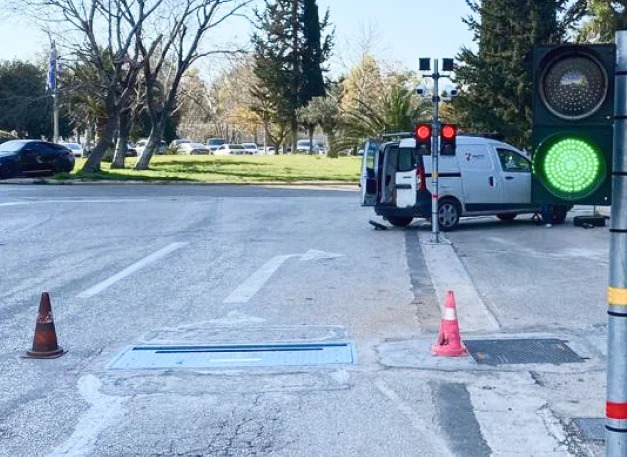Introduction
In recent years, advancements in imaging technology have led to the development of portable X-ray camera scanners, providing enhanced flexibility and efficiency across various industries. These scanners are revolutionizing sectors like healthcare, security, industrial inspection, and archaeology by offering real-time, high-resolution imaging without the need for bulky equipment. The ability to capture detailed internal structures in real-time has made X-ray camera scanners indispensable in multiple field applications.
What Are Portable X-ray Camera Scanners?
Portable X-ray camera scanners are compact imaging devices that utilize X-ray technology to penetrate objects and capture high-resolution images of their internal structures. Unlike traditional stationary X-ray machines, these scanners are designed for mobility, making them suitable for on-site inspections and emergency use. They consist of a lightweight, battery-powered unit that can be easily transported and deployed in various settings.
Benefits of Portable X-ray Camera Scanners
1. Mobility and Flexibility
One of the most significant advantages of X-ray camera scanners is their portability. These devices allow professionals to conduct on-site inspections without having to transport objects or patients to a stationary X-ray facility. This is particularly beneficial in remote locations, military operations, and disaster-stricken areas.
2. Enhanced Imaging Accuracy
Modern portable X-ray scanners feature advanced digital imaging technologies, such as high-resolution detectors and AI-powered image enhancement. These improvements result in sharper images, allowing for better diagnosis, threat detection, and industrial quality control.
3. Time and Cost Efficiency
Portable X-ray scanners eliminate the need for multiple trips to imaging centers, reducing both operational costs and turnaround times. This is particularly beneficial in healthcare settings where quick diagnostics can significantly improve patient outcomes.
4. Non-Destructive Testing (NDT) Capabilities
Industries such as aerospace, automotive, and construction rely on X-ray camera scanners for non-destructive testing (NDT). These devices enable professionals to inspect welds, electronics, and mechanical components without dismantling the structure, thereby saving time and preventing damage.
5. Safety and Compliance
Most modern portable X-ray scanners use lower radiation doses while maintaining image quality, ensuring safety for operators and subjects. Additionally, compliance with international radiation safety standards has made these devices more accessible for a variety of industries.
Emerging Use Cases of Portable X-ray Camera Scanners
1. Healthcare and Emergency Medicine
Portable X-ray scanners have transformed medical imaging, especially in emergency and rural healthcare settings. These devices enable:
On-site injury assessments in ambulances and battlefields.
Early disease detection in remote villages with limited access to medical facilities.
Veterinary applications, where transporting animals to imaging centers is challenging.
2. Security and Law Enforcement
Security agencies and law enforcement use portable X-ray scanners for:
Bomb detection and threat assessment in public spaces.
Baggage and cargo inspection at border checkpoints and airports.
Forensic analysis, aiding in crime scene investigations and contraband detection.
3. Industrial Inspection and Quality Control
In industries where precision is crucial, X-ray camera scanners help in:
Inspecting pipelines and welds for hidden defects.
Evaluating electronic circuit boards without dismantling components.
Ensuring food safety by detecting contaminants in packaged goods.
4. Archaeology and Art Restoration
Archaeologists and conservators are using portable X-ray scanners to:
Examine ancient artifacts and fossils without damaging them.
Analyze paintings and sculptures, revealing hidden layers and forgeries.
Identify structural weaknesses in historical buildings and monuments.
5. Military and Defense Applications
The military benefits from portable X-ray scanners in:
Battlefield diagnostics for wounded soldiers.
Detecting explosives and hidden weapons in conflict zones.
Structural integrity analysis of military equipment and vehicles.
Challenges and Future Outlook
While portable X-ray camera scanners offer numerous benefits, they also come with challenges such as high costs, radiation safety concerns, and the need for trained operators. However, continued advancements in AI-driven imaging, battery efficiency, and radiation safety protocols are set to improve these devices further.
The future of X-ray camera scanners looks promising, with ongoing innovations enhancing imaging capabilities, portability, and automation. The integration of AI will likely lead to automated threat detection, improved diagnostic accuracy, and real-time data sharing across industries.
Conclusion
Portable X-ray camera scanners are revolutionizing multiple fields by providing high-quality imaging in mobile and field-based applications. Their versatility in healthcare, security, industrial inspection, archaeology, and military operations highlights their importance in modern technology. As advancements continue, these scanners will become even more efficient, safer, and accessible, further transforming the way professionals conduct inspections and diagnostics in real-world scenarios.
 :
https://www.vehant.com/
:
https://www.vehant.com/












